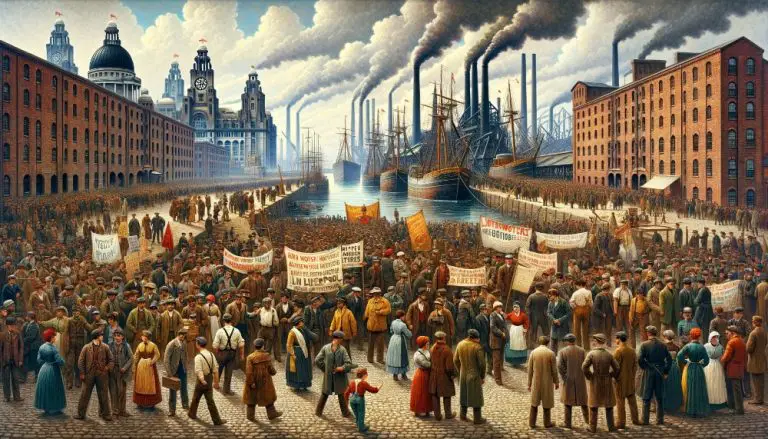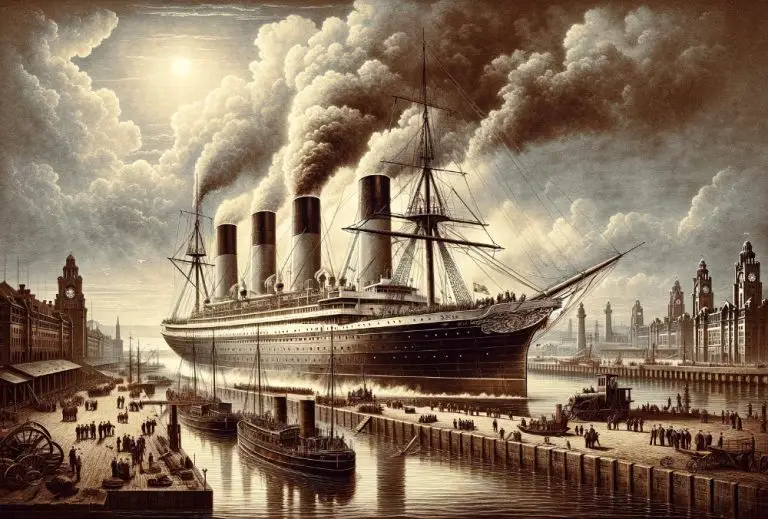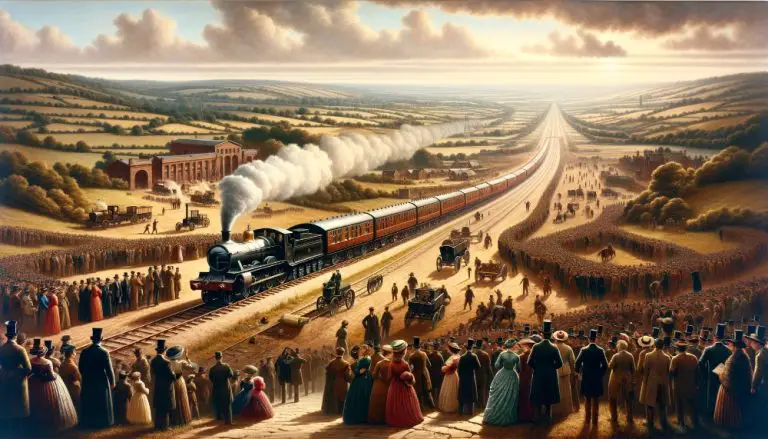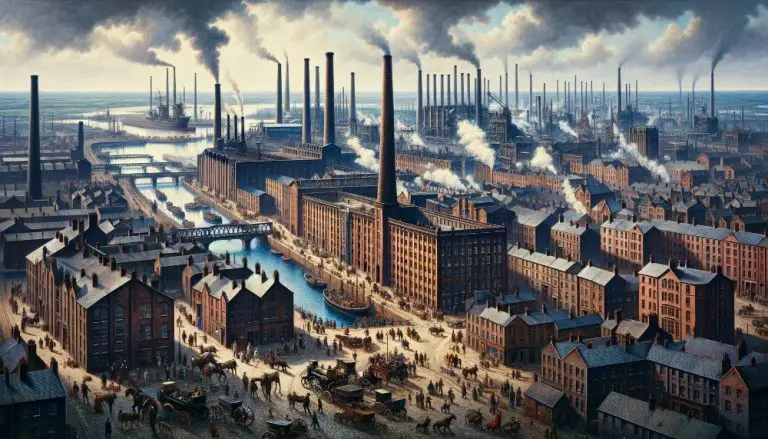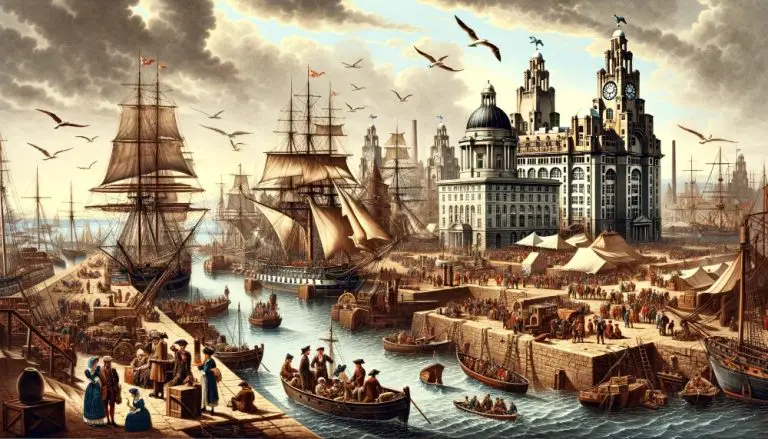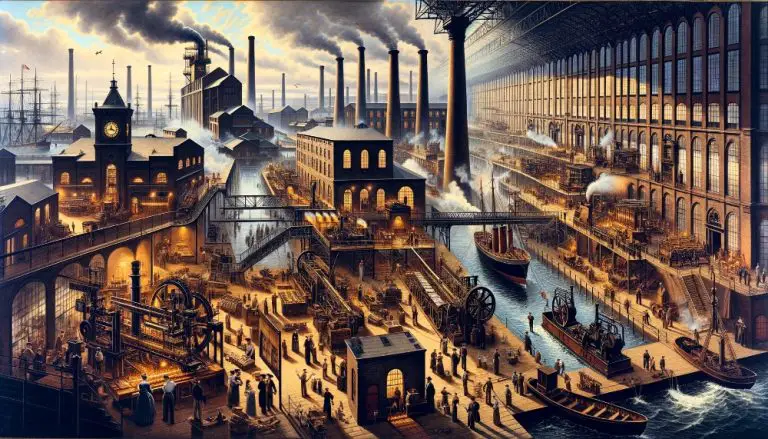Cultural and Social Impact of The Industrial Revolution on Liverpool
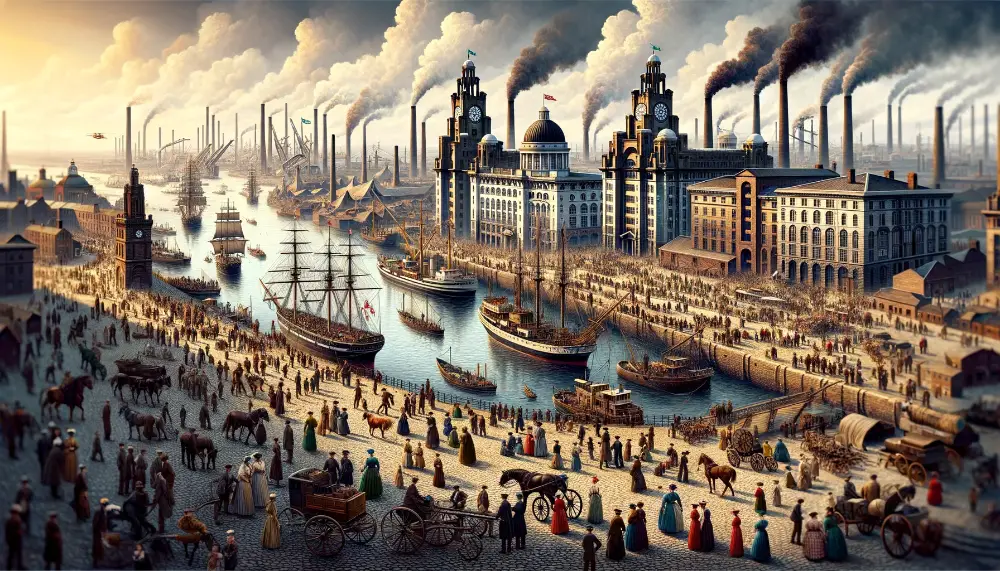
The Industrial Revolution had a profound effect on the culture and society of Liverpool. As one of the most important and wealthiest places in the world during this period, Liverpool experienced significant changes in its social and cultural landscape. The rise of industries, such as manufacturing and trade, led to the growth of the city and the emergence of new cultural institutions and artistic movements. It is important to understand the specific impacts of the Industrial Revolution on Liverpool’s culture and society to appreciate its historical significance.
Economic Transformation and Industrial Growth in Liverpool
Liverpool’s strategic location and its role in the triangular trade route contributed to its economic transformation during the Industrial Revolution. The city became a thriving center of commerce, with industries such as shipping, manufacturing, and trade experiencing unprecedented industrial growth. The rise of the industrial sector led to an increase in population and the development of infrastructure to support the growing industries. Liverpool’s economic prosperity during this period laid the foundation for its cultural and social development.
| Industries | Growth |
|---|---|
| Shipping | Increase in port activity and trade connections with the world |
| Manufacturing | Establishment of factories and production of goods on a large scale |
| Trade | Expansion of international trade networks and import/export activities |
The economic transformation of Liverpool during the Industrial Revolution had a profound impact on the city’s growth and development. As industries flourished, the demand for labor increased, attracting people from rural areas and other parts of the country. The population of Liverpool grew significantly, necessitating the construction of housing, transportation networks, and public amenities to accommodate the influx of people.
The growth of industries also brought about advancements in technology and infrastructure. New machinery and manufacturing techniques were introduced, leading to increased efficiency and production capacity. The construction of canals and railways further facilitated the transportation of goods, both within the city and for international trade. Liverpool became a hub of industrial activity, fostering economic prosperity and shaping the city’s future.
The Rise of Cultural Institutions and the Arts in Liverpool
The Industrial Revolution brought not only economic growth but also a flourishing of cultural institutions and artistic movements in Liverpool. As industries boomed, the city witnessed the establishment of museums, galleries, and theaters, becoming a vibrant cultural hub.
These cultural institutions were not only a reflection of Liverpool’s industrial prosperity, but they also played a crucial role in shaping the city’s cultural landscape. They provided a platform for local talent to showcase their work, while also attracting renowned artists and performers from around the world.
For example, the Liverpool Museum, now known as the World Museum, was founded in 1851 and showcased a wide range of artifacts and specimens, representing the city’s interests in scientific exploration and cultural diversity.
“The Liverpool Museum is a testament to the city’s commitment to education and cultural enrichment. It houses a vast collection of natural history specimens, ethnographic objects, and archaeological artifacts, allowing visitors to delve into the fascinating history of our city and the wider world.”
Galleries such as the Walker Art Gallery and the Tate Liverpool opened their doors to the public, inviting visitors to experience a diverse range of art and exhibitions. The Walker Art Gallery, established in 1877, now houses one of the largest art collections in England outside of London, boasting masterpieces from various artistic movements.
“The Walker Art Gallery is a treasure trove of artistic wonders, showcasing works by renowned artists such as J.M.W. Turner, Dante Gabriel Rossetti, and Hockney. It has played a pivotal role in nurturing the artistic spirit of Liverpool, inspiring generations of artists and art enthusiasts.”
Moreover, the emergence of theaters like the Liverpool Playhouse and the Everyman Theatre provided a stage for the performing arts, with memorable performances captivating audiences and contributing to Liverpool’s artistic legacy.
Liverpool’s cultural institutions and the arts became an integral part of the city’s identity, providing a means for self-expression and entertainment during a transformative period. Today, these institutions continue to thrive, showcasing the rich cultural heritage of Liverpool and preserving the legacy of the Industrial Revolution.
| Cultural Institution | Year Established | Significance |
|---|---|---|
| Liverpool Museum (now the World Museum) | 1851 | Featured a wide range of cultural artifacts and specimens |
| Walker Art Gallery | 1877 | Boasts one of the largest art collections in England outside of London |
| Tate Liverpool | 1988 | Part of the Tate network, showcasing contemporary and modern artworks |
| Liverpool Playhouse | 1866 | One of the oldest repertory theaters in the UK |
| Everyman Theatre | 1964 | A key venue for experimental and contemporary theater |
The Transformation of Liverpool’s Social Fabric
The Industrial Revolution had a profound impact on the social fabric of Liverpool. The rapid growth of industries led to an influx of people from different social backgrounds, resulting in a diverse and dynamic population.
This cultural diversity brought about social changes, as people from different walks of life interacted and influenced each other’s beliefs, customs, and values. The Industrial Revolution created an environment of social transformation in Liverpool, as individuals from various socioeconomic backgrounds found themselves living and working side by side.
The working class in Liverpool faced significant changes in their living and working conditions. As industrialization escalated, many workers faced long hours, poor wages, and hazardous conditions. These challenges prompted the emergence of new social movements and the fight for workers’ rights. The working-class solidarity and determination to improve their conditions eventually led to notable achievements, such as the establishment of labor unions and the enactment of labor laws.
“The working class movements during the Industrial Revolution laid the foundation for the rights and protections enjoyed by workers today.”
The transformation of Liverpool’s social fabric during the Industrial Revolution shaped the city’s identity and set the stage for future societal developments. The city’s diverse population and the struggles faced by the working class laid the groundwork for the development of a more equitable society, where the rights of workers and marginalized groups were recognized and protected.
The Rise of Social Movements in Liverpool
One of the significant outcomes of the social transformation in Liverpool was the rise of various social movements and collective actions. The working class, joined by other reform-minded individuals, fought for better working conditions, education, and social equality.
Key social movements during this period included the Chartists, who demanded universal suffrage and parliamentary reform, and the Abolitionists, who campaigned for the end of slavery.
| Social Movements During the Industrial Revolution in Liverpool | Main Objectives |
|---|---|
| The Chartists | Demand universal suffrage and parliamentary reform |
| The Abolitionists | Campaign for the end of slavery |
| The Suffragettes | Fight for women’s right to vote |
These social movements played a crucial role in challenging the existing social hierarchy and advocating for equal rights and opportunities for all.
The Industrial Revolution marked a turning point in Liverpool’s social fabric, bringing about significant changes in the lives of its residents. While the consequences of this transformation were complex and varied, they ultimately paved the way for Liverpool’s evolution into a culturally diverse and socially progressive city.
Conclusion
The Industrial Revolution had a transformative impact on Liverpool’s culture and society. The thriving industries, such as manufacturing and trade, propelled the city towards economic growth and prosperity. This economic transformation laid the foundation for Liverpool’s position as an influential cultural and economic hub.
During this period, Liverpool witnessed the rise of cultural institutions and artistic movements. Museums, galleries, and theaters emerged, showcasing local talent and attracting renowned artists and performers. The arts became an integral part of Liverpool’s identity, shaping its cultural landscape.
The rapid growth of industries also led to significant changes in Liverpool’s social fabric. The city saw a diverse and dynamic population, influenced by different beliefs, customs, and values. The working class experienced improvements in their living and working conditions, and social movements advocating for workers’ rights emerged.
The impact of the Industrial Revolution is still visible today in Liverpool. The city boasts a thriving arts scene, a rich cultural heritage, and a vibrant social fabric. The legacy of this transformative period continues to shape Liverpool’s identity and sets it apart as a city that embraces its industrial past while paving the way for the future.
FAQ
What was the impact of the Industrial Revolution on Liverpool’s culture and society?
The Industrial Revolution had a profound effect on the culture and society of Liverpool. It brought about significant changes in the social and cultural landscape of the city, shaping its identity and historical significance.
How did Liverpool’s location and role in the triangular trade contribute to its economic transformation?
Liverpool’s strategic location and its involvement in the triangular trade route played a crucial role in its economic transformation during the Industrial Revolution. The city became a thriving center of commerce and experienced unprecedented growth in industries like shipping, manufacturing, and trade.
What were the impacts of the Industrial Revolution on cultural institutions and the arts in Liverpool?
The Industrial Revolution fostered the emergence of cultural institutions and artistic movements in Liverpool. Museums, galleries, and theaters were established, and the growth of industries provided financial support, enabling them to showcase local talent and attract renowned artists and performers.
How did the Industrial Revolution transform Liverpool’s social fabric?
The rapid growth of industries during the Industrial Revolution led to an influx of people from different social backgrounds in Liverpool. This resulted in a diverse and dynamic population, bringing about social changes as different people interacted and influenced each other’s beliefs and values.
What is the overall impact of the Industrial Revolution on Liverpool?
The Industrial Revolution had a transformative impact on Liverpool’s culture and society. It led to economic growth, the rise of cultural institutions, and significant changes in the social fabric of the city. Liverpool’s identity was shaped during this period, establishing its position as an influential cultural and economic hub.
Source Links
- https://www.cmu.edu/rci/congress/dms/pdf/Manchester_Bichard_ExecSumm.pdf
- https://www.worldhistory.org/article/2229/social-change-in-the-british-industrial-revolution/
- https://en.wikipedia.org/wiki/History_of_Liverpool
- The History Behind Liverpool’s You’ll Never Walk Along - February 16, 2024
- The History of Everton FC - February 16, 2024
- The History of Liverpool FC - February 16, 2024

